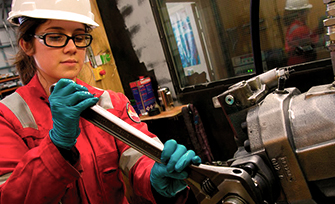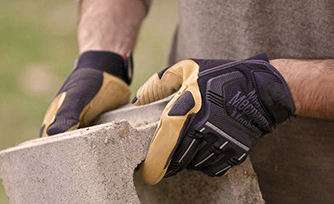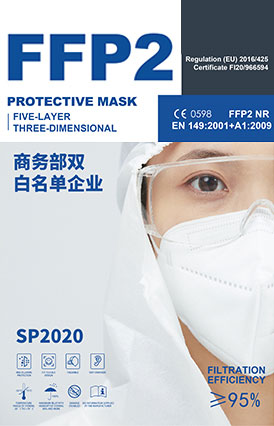STANDARD
Today, in more and more industries, employees need to wear safety workwear. In particular, this applies to industries where a large part of the work takes place near traffic, cranes and other motorised vehicles, as well as work that takes place in the dark. And it is a good investment. EN ISO 20471 certified safety workwear keeps employees safe while they concentrate on work. The employees will be visible at night, during the day, and from all angles, including from the rear where it is impossible for them to see. With the right EN ISO 20471 safety workwear, neither reflectors nor the fluorescent material will be hidden by blind angles.
Class 1 – Offers the least protection and visibility and is not suitable for use on public highways. It’s is used in low traffic environments such as parking lots and general work sites where equipment traffic does not exceed 25mph. Class 2 – Used in locations where proximity to traffic is much closer, with potential for traffic to exceed 25mph.
Class 3 – Highest visibility protection for utility workers, road crews and emergency personnel with high speed potential and the highest risk of injury. (see article on safety garment classifications here) <- link to “safety garment classifications” article

EN 17353 Protective Wear Equipment for enhanced visibility in medium risk situations This standard specifies the requirements for enhanced visibility equipment for clothing and products capable of visually signalling the presence of the wearer. Enhanced visibility equipment is intended to provide conspicuity to the wearer's presence in medium risk situations in all daylight conditions and/or when illuminated by vehicle headlights or searchlights in the dark. Performance requirements are included for colour and retroreflectivity, as well as for the minimum area and arrangement of materials in the protective equipment.

EN 14058 Protective clothing - Garments for protection against cool environments This European standard specifies the requirements and test methods for wear behaviour of garments for protection against cool environments. Use of tested garments in environments with an air temperature of -5°Cand higher. Identification should include classification of overall heat transfer resistance.

EN 342:2004 PROTECTIVE CLOTHING – GARMENTS AND CLOTHING COMBINATIONS FOR PROTECTION AGAINST COLD
This standard specifies the requirements and test methods for garments and clothing combinations (overalls or two-part suits) designed to protect the wearer in a cold environment (characterised by a combination of humidity, wind and an air temperature lower than -5 °C). The standard does not contain any specific requirements for head, hand or foot protection.

EN 343 is a certification standard used to clearly define the requirements and the methods of testing materials as well as the seams of clothing that are designed to protect the wearer from moisture; specifically, protection against rain and snow, mist and ground moisture. This standard is not intended to test the rain proofing of a completed garment, that standard falls under EN 14360. A complete rain proofing test is not part of the EN 343 standard.
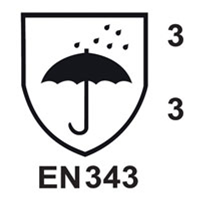
EN ISO 11611 - Protection when welding
This standard specifies the minimum requirements for protective clothing used when welding or performing similar processes with comparable risks. There are two classes, 1 and 2, with class 2 being the highest (= the best level of protection).
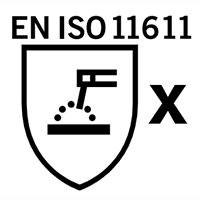
EN ISO 11612 - Protection against heat and flame
Clothing that protects against heat and flames. This standard describes coveralls made from a flexible fabric which are designed to protect the user's body (but not the hands) from heat and/or flames. With the exception of hats and gaiters, garments for the protection of the head, hands or feet are not covered.
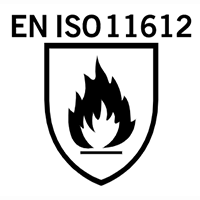
ISO 14116 is an international standard that is intended to specify the minimum performance requirements for limited flame spread properties of materials used in protective clothing. The overall purpose is to reduce the possibility of ignition in clothing which becomes a hazard to the wearer. PPE and other materials in compliance with ISO14116 are intended to offer worker protection only from brief contact and proximity to small flames – particular those with no notable or significant heat hazard.
IEC 61482-2 - Live working
Clothing that protects against the thermal hazards of an electric arc. IEC 61482-2 certification involves two test methods. The first test method (open electric arc) tests the fabric and garment in order to determine the ATPV/EBT value of the clothing. The second method (box test) determines the electric arc protection class of the fabric and the garment through the use of a forced and controlled electric arc. There are two different classes, with class 2 being the highest and offering the best protection.
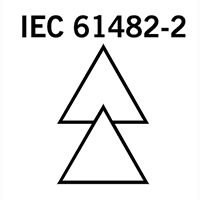
The EN1149 standard relates to a number of performance requirements relating to antistatic clothing that suppresses static charge to prevent sparking which may lead to fire or explosion. EN1149-3 specifically relates to the test methods for the measurement of electrical charge decay.
Defining the EN1149 Certification
Each certification uses a standard picture or pictogram to allow for easy identification on labeling and tech or data sheets. The standard pictogram for EN1149 is a lightning bolt above the text EN 1149 and covered the requirements for clothing that can conduct electricity. This clothing, footwear included, created part of a completely grounded system to prevent sparks or static discharge.
This type of clothing is typically worn by professionals and companies who must adhere to ATEX guidelines. It should be noted that the clothing should not be worn in oxygen-rich environments and is not intended to provide protection against the risk of electric shock.
Variable Testing
Fabrics for clothing worn in explosion-hazard environments must be compliant to either EN1149-1 or EN1149-3 testing.
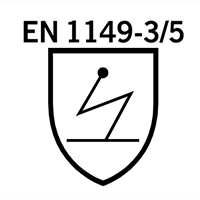
EN 13034/EN 13034+A1 offers limited protection against small quantities and splashes of liquid chemicals (Type 6 and Type PB [6] equipment). Safety apparel with this certification is suitable for use in areas where there is a risk of exposure to small splashes of chemicals, but where full body protection is not required. EN 13034 certified safety clothing is suitable for situations when you are in areas where you risk being exposed to small quantities of chemicals. Quickly remove the safety apparel if it’s exposed to chemicals.
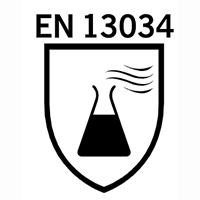
EN ISO 11393 (EN ISO 11393 supersedes EN 381)
EN ISO 11393 is an international standard that specifies requirements and test methods for personal protective equipment (PPE) designed to protect users against handheld chainsaw hazards. This standard ensures that protective clothing, footwear, gloves, and other equipment are tested rigorously to maintain high safety standards, focusing on reducing the risk of injury for chainsaw operators. It covers a variety of protective garments, including trousers, jackets, and gaiters, and is commonly adopted by industries where chainsaws are a necessary tool, such as forestry, landscaping, and construction.

EN 388:2016
Protective gloves against mechanical risks
According to this standard, characteristics such as abrasion resistance, cut resistance, tearing strength, puncture resistance and impact protection are tested. In conjunction with the pictogram, four numbers and one, or two letters, will be displayed. These signs indicate the performance of the glove.
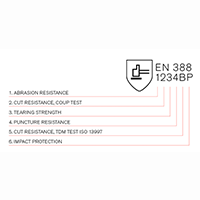
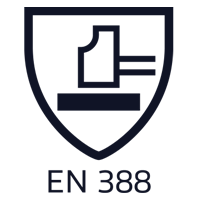
ANSI/ISEA 107-2020: High-Visibility Safety Apparel
Last updated in 2015, the American National Standards Institute (ANSI) for High Visibility Safety apparel standard provides consistent, authoritative guidelines for the selection and use of high-visibility apparel in the United States. The standard is intended as a guide to aid manufacturers, consumers and the general public in the use of high visibility safety apparel.
ANSI/ISEA 107-2015 offers performance specifications and outlines minimum amounts of background material and retro reflective material (high visibility tape), tape placement on garment, test methods, garment labeling, and luminance factor, among other factors.
The 2015 update consolidates the requirements of ANSI/ISEA 107-2010 and ANSI/ISEA 207 (American National Standard for Public Safety Vests) to establish a single, comprehensive document that considers all occupational tasks. While the standard continues to present three performance classes of garments (see below) based on the amount of visible materials and design attributes incorporated into the final configuration, it also identifies garment types based on expected use settings and work activities being performed. These are designated as off-road (type O), roadway and temporary traffic control (type R), or public safety activities (type P).
In response to concerns expressed by smaller-sized wearers about the risk of having to wear oversized garments that present a catch hazard, the committee included provisions for Type R Performance Class 2 and Performance Class 3 garments in the smallest size offered to utilize a reduced amount of background material to allow for sizing more appropriate for smaller workers. It is stressed that these reduced amounts are intended to address the smaller sized workers’ needs specifically, that only the smallest size offered for any one garment be allowed to deviate from the stated minimum and that the resulting configuration using these amounts be consistent with the other sizes for that particular garment.
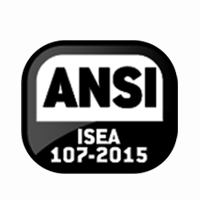
CAN/CSA Z96-02 High Visibility Safety Standard Summary The Canadian Standards Association (CSA) exists to produce standards that help to protect Canadians from hazards in almost every aspect of daily living. Recently, a new standard for a personal protective clothing requirement was developed by CSA, with the support of many Canadian employer/labour users, producers, special interest groups, and regulators. The CAN/CSA Z96-02 addresses high visibility safety apparel, an area where consistency in Canadian Regulations and standards was necessary. CAN/CSA Z96-02 High Visibility Safety Apparel Garment Standard, lists three classes of high visibility clothing and three levels of retro-reflective trim to improve conspicuity under all light conditions. Compliance with the standard will be mandatory where specified by government authorities. The result is enhanced worker safety. Class 1 - Apparel consists of a basic harness or stripes/bands over the shoulder(s) and encircling the waist. The center portion of the front torso band between the two vertical bands is optional. Class 2 - Apparel has full coverage of the upper torso (front, back, sides and over the shoulders). Stripes/bands shall be composed of retroreflective or combined performance materials. Class 3 - Apparel meets the same requirements as Class 2 with the addition of bands encircling both arms and both legs. These bands shall be composed of combined performance stripes/bands or a combination of retro-reflective and background material.




